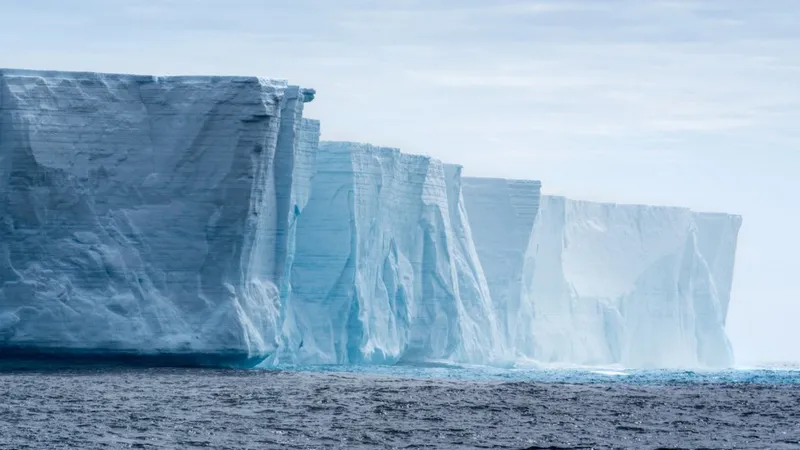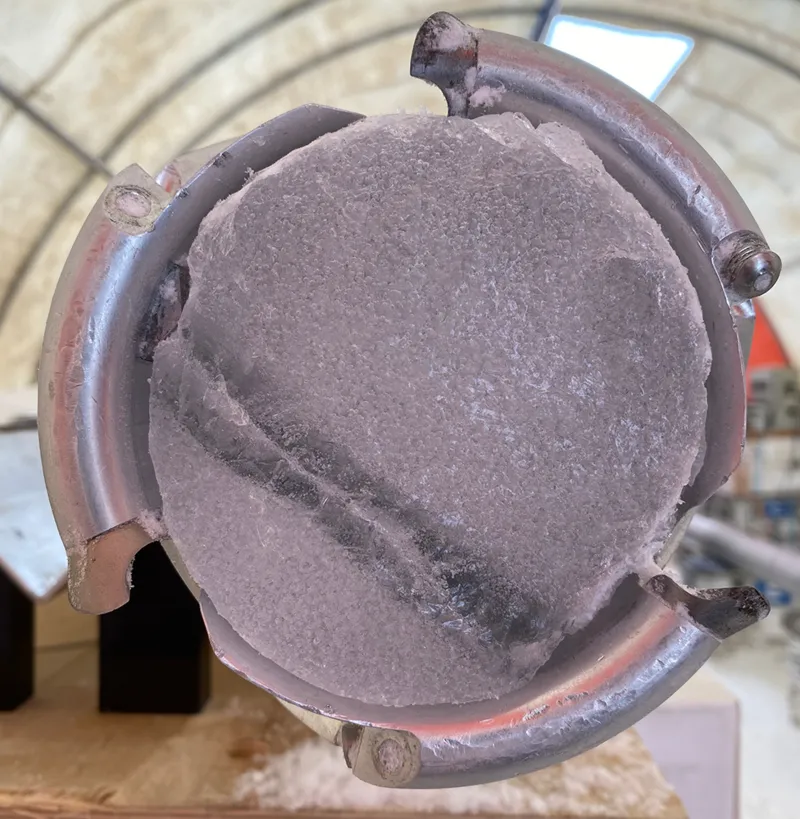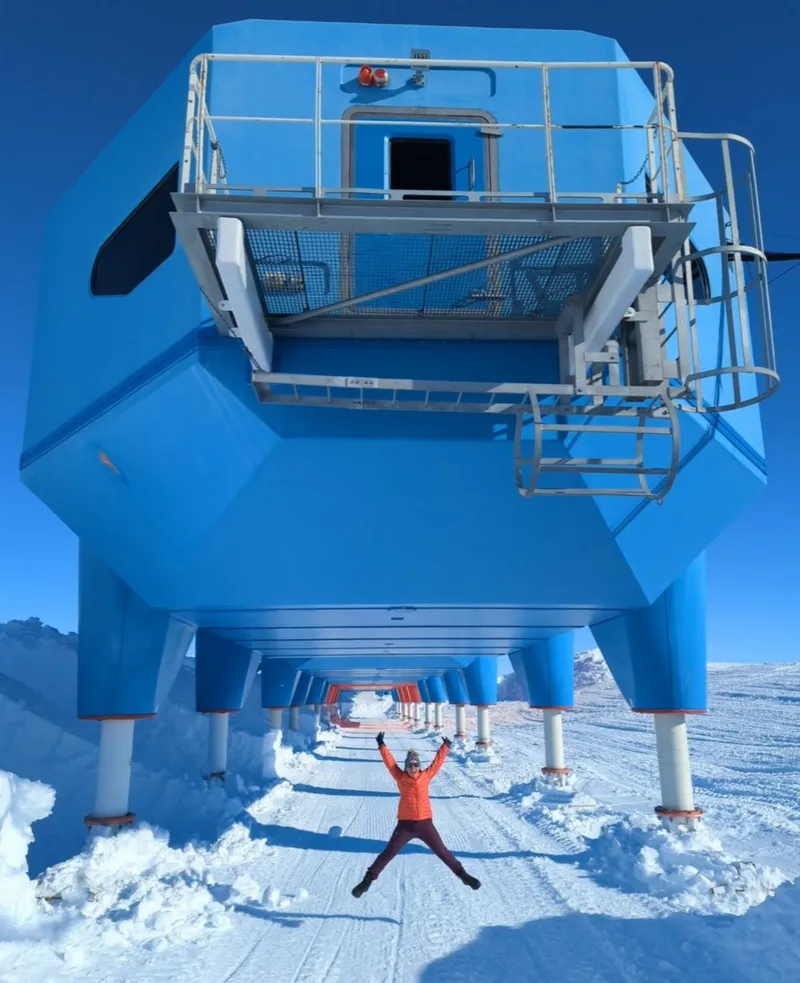Scientists probe the secrets of mega icebergs
 British scientists are currently delving into the mechanisms behind the formation of colossal Antarctic icebergs, which play a significant role in the loss of ice from the continent and consequently contribute to rising sea levels. These immense frozen masses, sometimes as large as cities, account for nearly half of the ice lost from Antarctica.
British scientists are currently delving into the mechanisms behind the formation of colossal Antarctic icebergs, which play a significant role in the loss of ice from the continent and consequently contribute to rising sea levels. These immense frozen masses, sometimes as large as cities, account for nearly half of the ice lost from Antarctica.
The focus of the research is to gain a deeper understanding of the processes that lead to the fracturing of ice, particularly in regions where recent occurrences have witnessed the detachment of two massive icebergs. By studying these events, scientists aim to uncover new insights into the physics behind ice fracturing.
Through their investigations, researchers anticipate developing more accurate models that can forecast the occurrence of iceberg calving events. In scientific terminology, "calving" refers to the breakaway of icebergs, drawing an analogy to the process of a cow giving birth to its offspring. The ultimate goal of this research is to enhance our ability to predict when and where such calving events are likely to take place, thereby refining our understanding of Antarctica's contribution to sea level rise.
The area of focus for this study is the Brunt Ice Shelf, which extends as a floating extension of glaciers flowing from Antarctica into the Weddell Sea.
In recent years, this region has witnessed the detachment of two massive icebergs. The first, named A74 and released in 2021, was comparable in size to Greater Paris, spanning an area of 1,300 square kilometers (810 square miles). Subsequently, in 2023, an even larger iceberg named A81 broke away, measuring approximately 1,500 square kilometers (930 square miles) and equivalent in size to Greater London.
Scientists from the British Antarctic Survey (BAS) have recently completed a research expedition to the Brunt Ice Shelf, where they installed a variety of instruments, including seismometers, radar systems, and GPS receivers, onto the remaining ice structure. The Brunt Ice Shelf, like other ice shelves, is not homogeneous but consists of different types of ice.
This ice shelf is composed of a mixture of glacier ice that originated from the continent and sea ice and snow that have filled in gaps, essentially acting as a binding agent to hold various segments of the shelf together. During the expedition, researchers drilled into the ice to collect samples of these different ice types.
Dr. Liz Thomas, a scientist involved in the research, explained that the collected ice cores will be subjected to intense pressure testing in the laboratory. The aim is to understand the physical properties and strength of the ice. By applying pressure to the ice cores, researchers will observe how and where the ice fractures. This information will provide insights into the mechanisms that lead to the formation of large icebergs.
Dr. Thomas emphasized that understanding the strength and behavior of different types of ice is crucial for elucidating why massive icebergs break away from ice shelves like the Brunt Ice Shelf. This research will contribute to a better understanding of the processes driving ice shelf dynamics and the potential implications for future sea level rise.
Understanding Ice Shelf Dynamics: Insights from Brunt Ice Shelf Research
 Researchers anticipate that the findings from their study on the Brunt Ice Shelf will have broader implications beyond this specific region, potentially shedding light on ice dynamics across various sectors of Antarctica. Approximately 75% of the Antarctic coastline features floating ice platforms capable of releasing icebergs.
Researchers anticipate that the findings from their study on the Brunt Ice Shelf will have broader implications beyond this specific region, potentially shedding light on ice dynamics across various sectors of Antarctica. Approximately 75% of the Antarctic coastline features floating ice platforms capable of releasing icebergs.
The natural process of shedding large segments of ice from the leading edge of an ice shelf is considered a normal occurrence. For a shelf to remain in equilibrium, the expulsion of icebergs must counterbalance the accumulation of snowfall and ice at the glacier's rear.
While the destabilization of an ice shelf due to warm water intrusion at its front edge could disrupt this equilibrium, there is currently no evidence to suggest such a phenomenon is occurring at the Brunt Ice Shelf.
Nevertheless, warmer conditions in other parts of Antarctica have been observed to trigger complete shelf collapse, leading to the rapid release of icebergs on a grand scale. This highlights the potential vulnerability of Antarctic ice shelves to environmental changes and underscores the importance of understanding their dynamics for predicting future sea level rise.
Impacts on Sea Level Rise
 Dr. Emma Pearce explained that in certain regions of Antarctica, climate change has induced instability in ice shelves, causing them to flow and calve icebergs at an accelerated pace. She likened this process to removing the cork from a champagne bottle, where the release of icebergs facilitates the rapid flow of ice into the sea, consequently contributing to rising sea levels.
Dr. Emma Pearce explained that in certain regions of Antarctica, climate change has induced instability in ice shelves, causing them to flow and calve icebergs at an accelerated pace. She likened this process to removing the cork from a champagne bottle, where the release of icebergs facilitates the rapid flow of ice into the sea, consequently contributing to rising sea levels. The mechanisms driving these phenomena are not fully understood, posing a challenge to accurately predict future sea level rise. Dr. Pearce emphasized the importance of gaining a better understanding of these processes to reduce uncertainties in sea level projections.
The mechanisms driving these phenomena are not fully understood, posing a challenge to accurately predict future sea level rise. Dr. Pearce emphasized the importance of gaining a better understanding of these processes to reduce uncertainties in sea level projections.
The Brunt Ice Shelf experienced a significant increase in its seaward movement following the detachment of icebergs A74 and A81. Historically, the shelf had been flowing forward at a rate of 400-800 meters (1,300-2,600 feet) per year. However, after the departure of the icebergs, this rate surged to as high as 1,500 meters (4,900 feet) per year. Although it has slightly decreased to 1,300 meters (4,300 feet) per year, this acceleration highlights the dynamic nature of Antarctic ice shelves and their response to environmental changes. The findings of the study are expected to undergo review by the UK's Foreign, Commonwealth and Development Office (FCDO), given its interest in ensuring the security of British infrastructure in Antarctica, particularly at the Brunt Ice Shelf where Halley VI, one of the UK's major research stations, is located. The presence of a base flying the Union flag on the shelf since 1956 underscores the significance of this region to UK Antarctic operations.
The findings of the study are expected to undergo review by the UK's Foreign, Commonwealth and Development Office (FCDO), given its interest in ensuring the security of British infrastructure in Antarctica, particularly at the Brunt Ice Shelf where Halley VI, one of the UK's major research stations, is located. The presence of a base flying the Union flag on the shelf since 1956 underscores the significance of this region to UK Antarctic operations.
In 2017, the base was relocated 23 kilometers (14 miles) upstream of the ice flow to mitigate the risk posed by the chasm that ultimately spawned iceberg A81. While positioning a research station on an active ice shelf may seem daring, Dr. Oliver Marsh highlighted its advantages. He explained that having a station on an ice shelf with cracks enables researchers to conduct detailed studies that would otherwise be challenging.
BAS scientists are sharing their research findings at the European Geosciences Union General Assembly meeting in Vienna this week, providing insights into their investigations and the implications for understanding ice shelf dynamics and ensuring the safety of Antarctic research infrastructure.








































